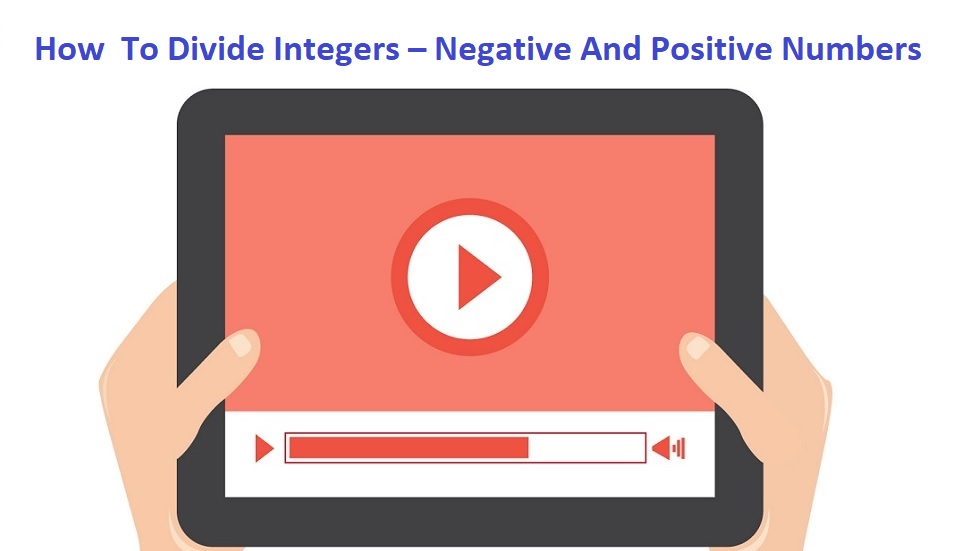The main purpose of this page is to explain how to divide integers. Each mathematical operation has its own rules according to which it is used, including the division of whole numbers. That’s why here we will review the rules. Then we will use all those rules in specific examples that will help you learn everything about this issue.
Apart from the solved examples in text form, our website can help you with even more solved examples which are presented to you in video format below on this same page. You can use these video examples to determine how well you know how to apply this math operation, and how well you do when solving new examples. So pay attention to the content of this page and try to learn properly and solve this problem once and for all.
If we compare this mathematical operation, you will realize that it is very similar to the multiplication of integers, especially in the part of determining the type of sign that will be obtained in the result in each different situation. But still, although the rules are almost the same, here we will repeat them all from the beginning so as not to cause some confusion among any of the readers!
Divide Integers
In the beginning, let’s start with the rules that must be followed. We must do that if we want to learn how to divide integers. During this mathematical operation, we divide integers in the same way as we divide natural numbers. Regarding the sign of the result, we pay attention to the following rules:
If the integers we are dividing have the same sign, then the sign of the result must be plus (+).
If the integers we are dividing have a different sign, then the sign of the result must be minus (-).
Respecting the rules given above, see how all the different examples are solved below on the page:
Example 1: Determine the result obtained after dividing the integers:

The numbers in the first example have the same (+) signs, so the result must have a plus (+) sign. The result is equal to +4.
Example 2: Determine the result obtained after dividing the integers:

The numbers in the second example have the same (-) signs, so the result must have a plus sign (+). The result is equal to +4.
Example 3: Determine the result obtained after dividing the integers:

The numbers in the third example have different signs (- and +), so the result must have a plus sign (-). The result is equal to -4.
Examples In Video
It is our opinion that the three solved examples above the page are sufficient for any reader to have a good understanding of how integers are divided. In any case, even if there are more than two numbers in a particular problem or example, the rules remain the same. By applying the same rules, literally any problem involving the use of this mathematical operation can be solved.
In the video below you can watch solved examples that will explain even more about how to divide integers. Watch the video and determine if there is a part that gives you some problems, or do you already know how to divide whole numbers.
Good luck!





